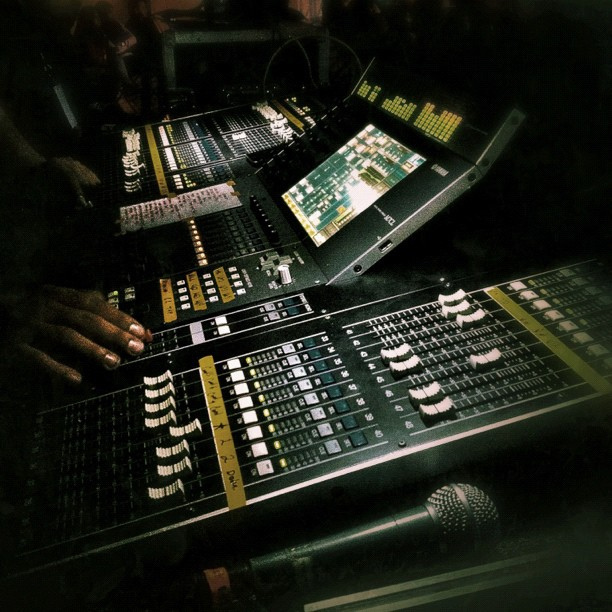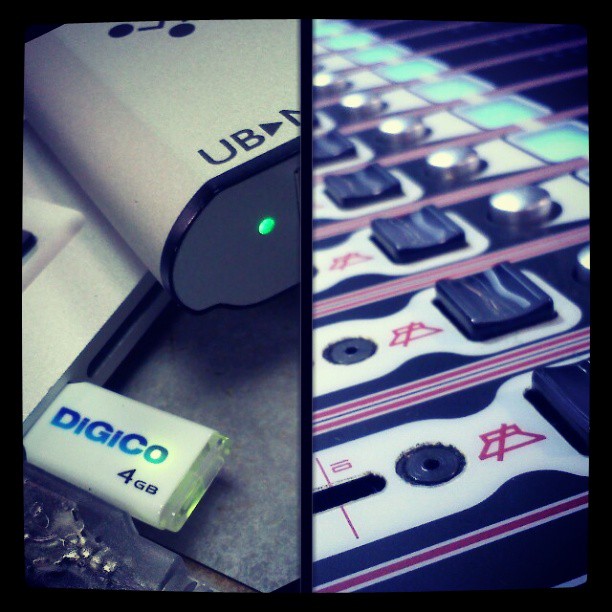Recording From Your Digital Console: Yamaha and Dante- Pt. 1 Configuring the Console
Link to Gabriel's photo stream
The Rig
Now it's time to figure out how to do all of this with a Yamaha digital console, and a Dante network.
The computer of choice will be a 2010 model 13" MacBook Pro running OS X 10.7.5 "Lion." All of the Audio will be pumped into Pro Tools 10.
Our console today will be a Yamaha LS9-32 with two Dante MY 16-AUD Dante Network Cards. These are 16 channel network audio cards. They'll allow us to send 32 audio channels to our computer via CAT5 cable. We're also going to need a Gigabit Ethernet switch. This will allow us to connect the two Dante cards to the audio network, then use Dante Virtual Soundcard on our computer. We wouldn't have to do quite as much work if we were using one of the newer CL series consoles with a Rio stagebox.
There's a few things to note here-
- I'm not going to go into every single detail- for eample installing the cards into the console is pretty easy. The guides on the Yamaha website cover that. I just want to touch a few things that might get missed along the way.
- This process might work on the first try for you. Or it might not. I've had clients that haven't had any issues with a Dante set up. Then I've seen Dante networks collapse after the gigabit switch is power cycled- meaning they work one day, and they don't the other.
- You can probably tell by my last two notes that I'm not a huge fan of this setup.
Helpful Links
Here's a few helpful links for more information before you get started. The first is from Yamaha and contains a few user and setup guides. You'll need to click on the tab titled "self-training." Read through these a few times. They're pretty helpful.
Yamaha / Dante MY 16-AUD Dante Network Cards
You're also going to want to make sure you have the latest software and firmware updates:
And you'll need a gigabit switch. As far as I know the Dante networks are a little particular about what hardware you use. There are some guides in the links below to choosing a switch.
Gigabit Switches For CL Series Consoles
Getting Started
Installing the Dante cards is covered on page 12 of the current guide, available from the first link above. You'll need to do that, but in short they pretty much just plug into the back of the console.
So, once the cards are installed you'll need to decide what your clock source is. There is a lot of detail about that on pages 28-33 of the Dante-MY16-AUD User Guide.
Then you'll need to configure your direct outs. To do that you'll go to the patch editor on the console. Select the Direct Out patch tab. Then set Input Chanel 1 to Slot 1 Output 1. Set Input Channel 2 to Slot 1 Output 2, and so on. When you get to Input 17, just set it to Slot 2 Output 1. In short Channels 1-16 Direct Outs get routed through Slot 1 Outs 1-16. 17 -32 get routed to Slot 2 Outs 1-16.
Last Step- this is really important. SAVE YOUR SCENE. You may also want to consider "safe-ing" your patching. This prevents the output patching from being altered with scene recalls. For all the technical stuff you can stop reading here.
An Apology for the Delay
Now I need to apologize for taking so long to write this part of the series! I think it was October 2013 since my last post. I have to be honest- after I started I got rather bored with it. Having to work out all the computer details and things like that isn't that fun. I'd rather be mixing. Setting up a Dante network can be a bit involved, and sometimes the Dante cards on-board the consoles just don't want to act quite right. That being said- Yamaha/Audinate have released several updates since I started writing this series that address quite a few problems. It's also noteworthy that the newer Yamaha hardware that are running Dante natively such as the new CL series consoles (CL1,3,5 etc) seem to work extremely well, as far as I know.



